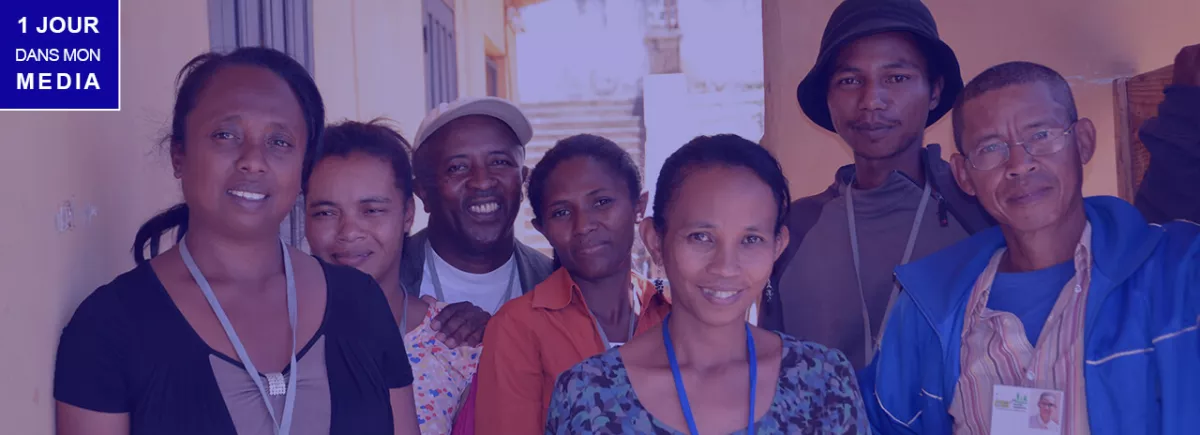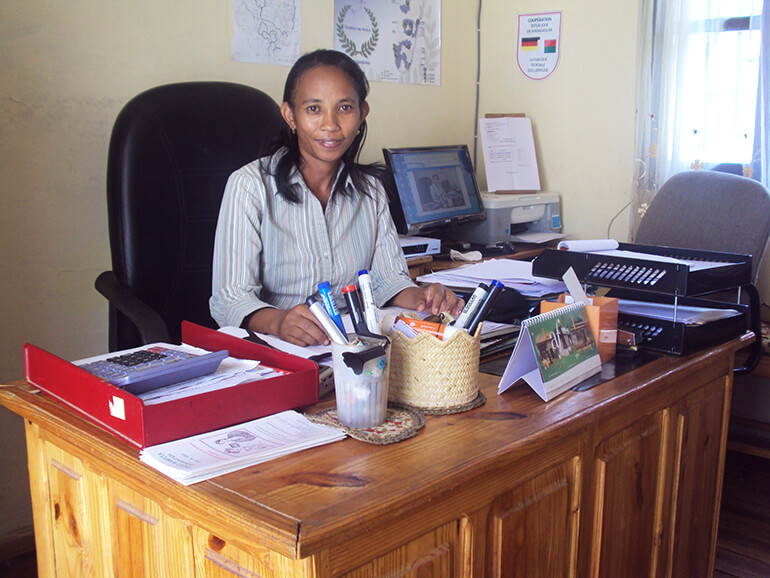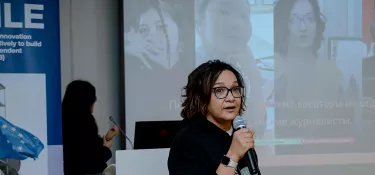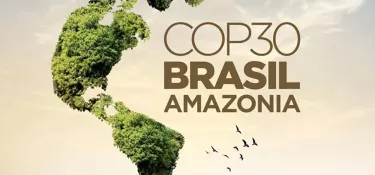
Radio Mampita, a media organisation for farming communities in Madagascar
Related project
Media 360°"1 day in my media organisation" is a series of reports, which, each week, gives an account of the daily lives of people working in media organisations in Africa, the Arab world and South-East Asia, with the support of CFI.
This week, an interview with Yves Lucienne Voahirana from the media organisation
Radio Mampitain Madagascar.
Yves Lucienne Voahirana is the 52-year-old manager of Radio Mampita, and she has been responsible for the technical, financial and administrative operations of the media organisation since its creation in 1997.
The community radio station was set up by means of a programme for communications support by the
Swiss Agency for Development and Cooperation. It is essentially aimed at rural communities and the activities that take place in those areas.
“Farming communities have a significant role on the radio waves. 80% of the content broadcast is dedicated to them."
Ensuring that farmers' voices are heard
The station's editorial line is mainly focused on agriculture, environmental protection, education, social issues and health matters.
Mampita provides a discussion forum for farmers and encourages people to share their experiences, in particular with rural technicians.
The programmes relate to new agricultural practices introduced in Madagascar and neighbouring countries which may prove to be useful to farmers. Through this channel, the listeners become aware of issues relating to the environment and civic education. The radio station's role in social dialogue and mediation between communities is very important to Lucienne:
“It is vital to us to defend the interests of farmers in an increasingly complex economic sector, and to show that they make a significant contribution to local development."
A smooth-running, institutionalised collaboration
The team consists of 11 permanent members of staff, including two journalists, an accountant, a receptionist and three presenters/production technicians. The radio station is run by three bodies:
- The general meeting: supreme decision-making body made up of farmers, the general meeting gives a broad outline of activities and focus areas for the media organisation, according to the budget and action plan.
- The administrative board: ensures that the decisions taken by the general meeting are implemented, it supervises and monitors the work of the permanent members of staff.
- The team or management: carries out the instructions issued by the administrative board, it makes sure the station runs smoothly and conducts the radio station's activities.
The Swiss Agency for Development and Cooperation stopped funding Radio Mampita in 2004 and now the station is completely financially self sufficient by virtue of the revenue generated from advertising.
“All the national or international development projects buy time slots on Radio Mampita, as they were convinced that they could use our station to reach their target audience. We also broadcast all advertisements that comply with our code of ethics, regardless of the subject."
Five years ago, thanks to financing from the German embassy in Madagascar, the media organisation constructed a 75 m2 building that has now become its headquarters, situated in Anjoma in the town of Fianarantsoa.

The radio station has two studios – one for production and another for broadcasting.
After the information and educational programmes, Radio Mampita broadcasts music and radio theatre productions. By contrast, it refrains from airing political and religious programmes.
The head of programming and the chief editor check the veracity of all information before broadcast.
Radio, the most effective medium in Madagascar
Madagascar has a high rate of illiteracy. According to UNESCO, 71% of Madagascans aged 15 years or over can barely read a short text. Communities with a high rate of illiteracy are marginalised by the written press, and the rural population is marginalised by French speaking press. “The language spoken by the station is Malagasy, and we strive to keep the tone friendly and to interact with our audience."Generally located in remote rural areas, this category of stakeholders prefers to listen to the radio and represents 59% of the audience, according to the EvMed/CERCOM 2014 public survey.
Source :
Study on the development of media organisations in Madagascar, 2017, IPDC, UNESCO.
Radio Mampita intends to fill this gap.
The media organisation also relies on social networks and the internet: the radio station currently has website, a Facebook page and a Youtube channel.
In a country where media organisations are generally owned by politicians, religious institutions or the government, Radio Mampita wants to stand out by providing a useful service: "In 2000, a number of criminals were arrested in an area where cattle theft was rife, thanks to the swift dissemination of information via Radio Mampita", she finishes.


